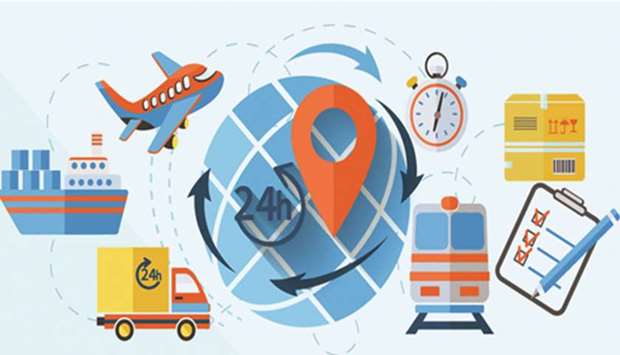Once upon a time a former division of Royal Philips Electronics, Philips Semiconductor was one of the leaders of the market selling 80% of chips used by mobile phones. Early 2000, the mobile phone market was led by Nokia with 30% of market share followed by Motorola and Ericsson. Based on a Northwestern University, Kellogg School Management Business Case, 40% of Nokia’s and Ericsson ‘s production was relying on a Philips semiconductor plant in Mexico. In Q1 2000, a fire impacted the Mexican plant damaging part of the chips stock. Both the North European telecommunication companies had a different reaction when the incident, after being quickly managed, was reported. The fire incident was communicated to the customers few days after with an estimated limited impact in the chips production. Things got complicated when around a week after, the full impact in chips production was assessed, communicating to both the customers a delay of weeks in terms of delivery.
One of the customers took a step ahead, based on the first signs, implementing a series of measures to track in detail the chips production and evaluate its risk exposure in terms of mobile phones production impact. By the time the supplier communicated the increased delay in delivery, the customer was ready with a response team to identify solutions to source the product from other suppliers, besides implementing design modifications, signing new supplier contracts and supply rerouting.
On other hand, the second customer assessed the situation as normal in the first incident report and didn’t scale up the information until they received the formal confirmation weeks later that the delivery impact was higher-than expected. The second customer could not anticipate the supply chain impact, failing to secure the required chips, impacting its own mobile phone production, which ended delaying the launch of a new model and impacting negatively its sales.
In this example, we could see the importance of anticipating the business impact of unexpected incidents and monitoring properly early signals.
At a larger scale, we can see what happened in the case of the State of Qatar when on the 8th of June last year some of the neighbouring countries imposed an unjust economic blockade. Based on the vision of the Amir, His Highness Sheikh Tamim bin Hamad al-Thani, the Father Amir and the government team, several measures were taken years ago to develop Qatar’s supply chain diversification, sealing strong business relations with several strategic countries and reinforcing the State’s supply infrastructure, with the Hamad International Airport and the Hamad Port being key examples. In addition, Qatar’s business environment reacted quickly following the blockade anouncement, setting direct marine service routes to Oman, reinforcing air cargo fleet availability and all main business from oil & gas, construction to trading, setting up supply, procurement and business continuity teams to monitor the situation and re-evaluate quickly their supply chains.
At a lower scale, supply chain is also a key component of small and medium companies, not necessarily a priority for most, but a cause of failure in case it’s not evaluated properly and not kept monitored. Without overcomplicating small businesses with dedicated supply teams, risk scenarios and business continuity monitoring systems, the objective is just to understand what are the core supply needs. Also it’s important to understand from where we get the supplies and keep an eye on its sourcing activity, thinking from time to time of what could happen if something goes wrong. This could be applied as follows:
n Evaluate the supply process: Identify the key materials/services required to develop the company value proposition and understand in detail it’s process flow, sourcing origins, key suppliers and the logistics behind.
n Monitor the supply performance: Identify key measures to monitor the sourcing activity, looking for potential issues and ways to improve the supply overall: Are materials arriving on time? Is the quality of the product maintained? How about it’s packaging? how is the relation with the supplier? Any incident happening that could impact the supply? How is the supplier activity going? Is he reliable?
n What if….?: Without becoming paranoiac, we need just to maintain a constant understanding of the consequences that the disruption of core supply elements could bring on the company’s activity and its customers. The objective is to be able to anticipate preventive actions that could be quickly implemented in case early signals emerge in the monitoring of the supply activity. What would happen if a material is delayed, a logistical route is closed, or a supplier goes bankrupt?....
n Alternative supply options: It’s paramount to identify alternative suppliers, materials or services to ensure not having any activity disruption, even if its implemented for a limited timeframe or at a costly solution. The focus remains to provide the product or service when the customer needs, avoid impacting customer experience or losing them for not fulfilling their expectations.
Small and medium businesses’ supply chains are continuously evolving and require a recurrent evaluation to prevent any disruption and maximise its efficiency. The development of digital tools are key in the enhancement of the supply chain efficiency and information exchange. Most of the tools could be beyond a small business budget but should be kept in sight to ensure getting the right competitive edge. Other key solution is to push supplier boundaries, partnering with them to evaluate and optimise mutually the supply process.
Having a complicated or a simple one, technology-driven or not, the important is just to understand in detail your company’s supply chain, maintaining it constantly monitored and getting ready the extinguisher and phone when the next fire strikes.
Yanick Latil is managing partner of Y&S Consulting LLP.

Royal Philips

